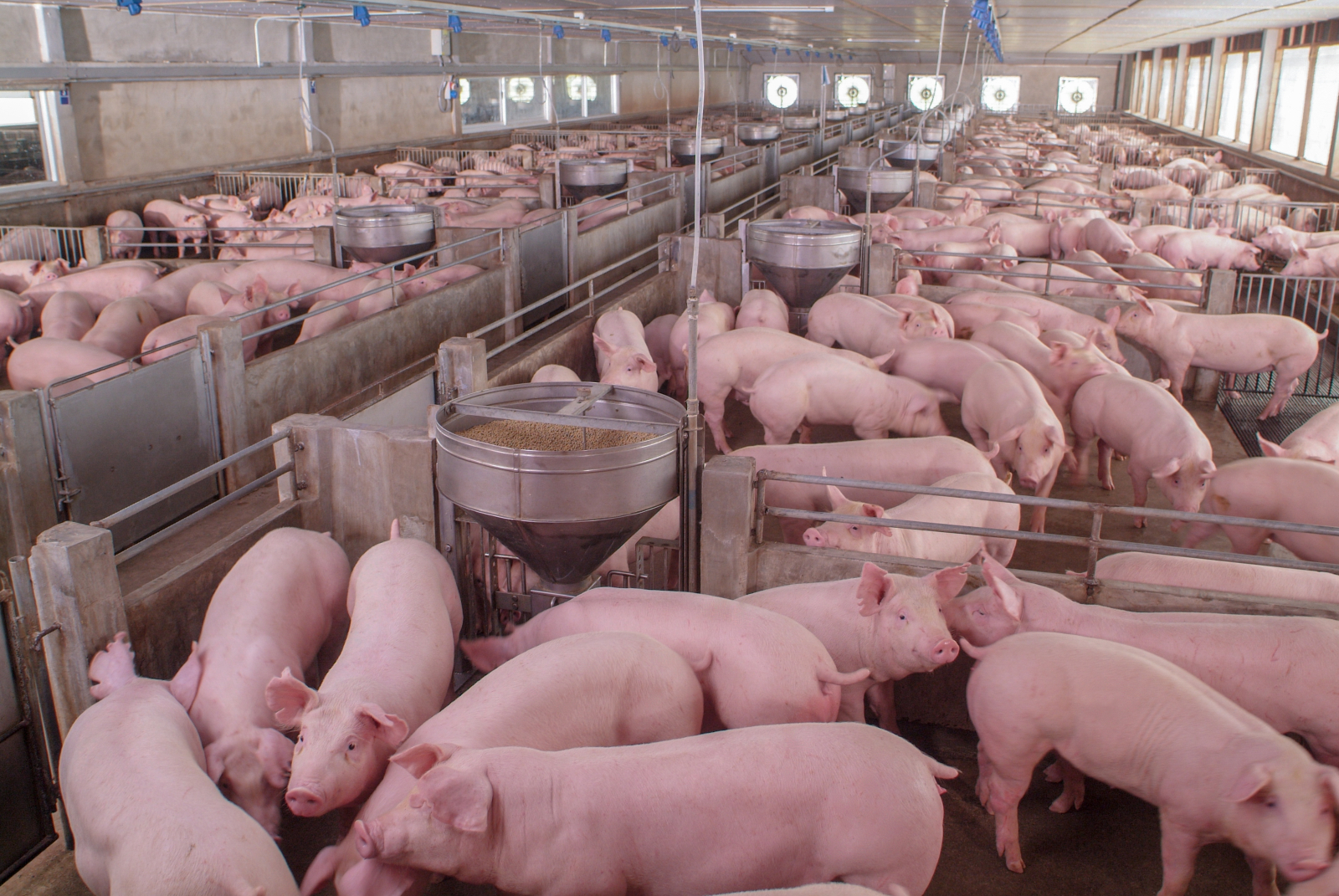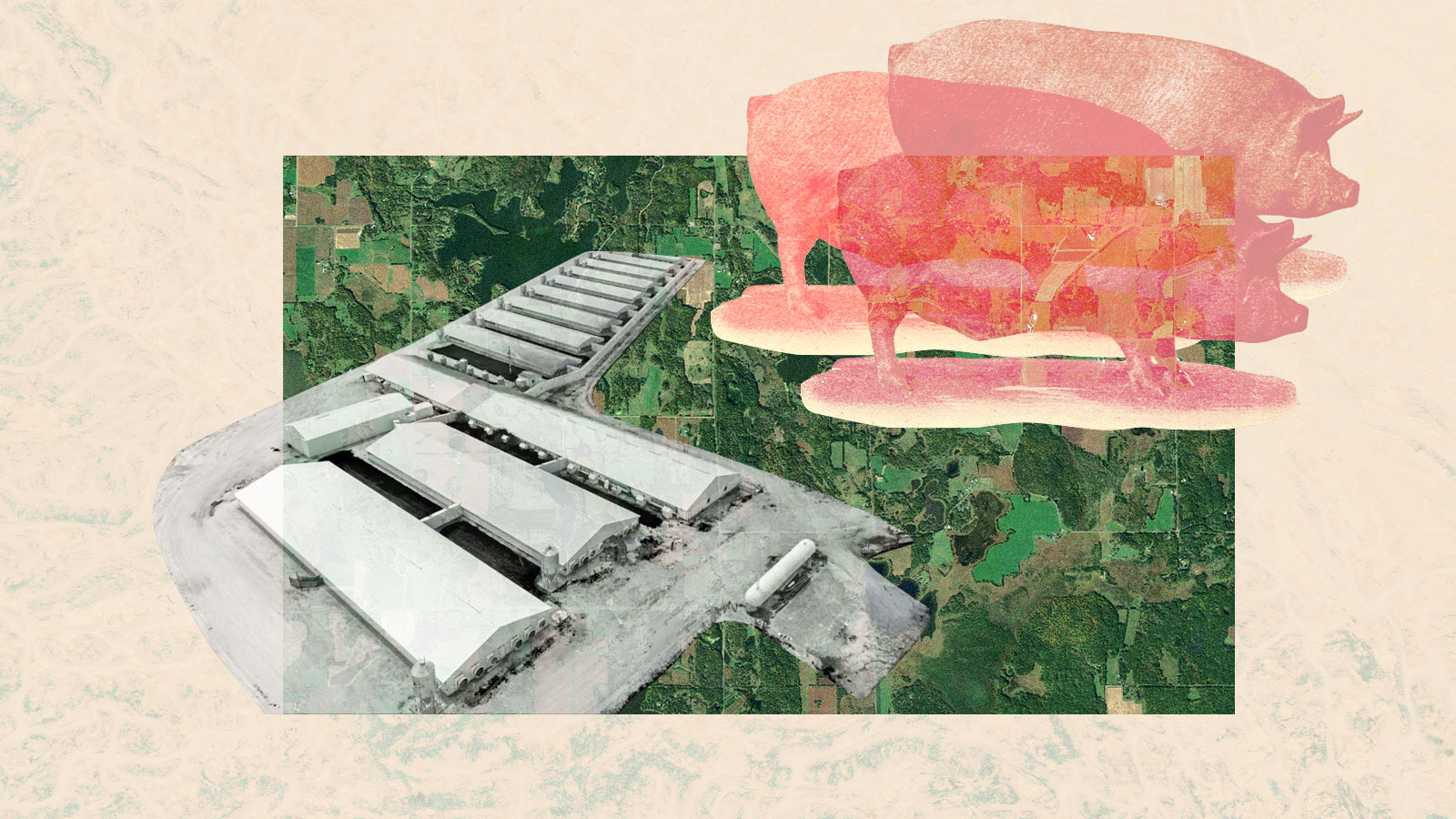The small community of Laketown, Wisconsin, home to just over 1,000 people and 18 lakes, is again at the center of a battle over how communities can regulate large, industrial farming operations in their backyards.
The town, which is half an hour from the Minnesota border, is the target of a lawsuit supported by the state’s largest business lobbying group, which claims the town board overstepped its role when it passed a local ordinance to prevent pollution from concentrated animal feeding operations, or CAFOs*.
Filed in Polk County Circuit Court in October, the lawsuit pits local farmers against the municipality, where decisions are made by a single town chair and two supervisors. Wisconsin Manufacturers & Commerce, or WMC, a lobbying group that defines itself as the state’s “largest and most influential business association” is representing the residents suing the town through its litigation center.
Early this year, WMC sent a letter to the town board that they would see legal action if the ordinance was not repealed. The notice of claim, sent in April, argues the town passed an ordinance with various illegal provisions under state law. The Wisconsin Manufacturers & Commerce Litigation Center, who have previously filed lawsuits to rollback state protections against water pollution, did not respond to repeated requests for comment.
“They see this ordinance, if not challenged, as something that may become more the norm around the state,” Adam Voskuil, staff attorney for the nonprofit law office Midwest Environmental Advocates, told Grist. This law office has issued its support for Laketown’s ordinance in the past but is not representing the municipality in this ongoing litigation.
As the agricultural industry increasingly forces farmers to “get big or get out,” CAFOs have become plentiful across Wisconsin and the country at large, with more and more animals living on CAFO operations in recent years. The size of these farms varies within a state but generally are seen as operations with 2,000 or more pigs, 700 or more dairy cattle, or over 1,000 beef cattle.
The growth of these operations has been linked to public health problems like various cancers as well as infant death and miscarriages, caused by water contaminated with waste runoff from farms. On the other side of Wisconsin, residents in Kewaunee County have seen manure coming out of their faucets from one the largest CAFOs in the state, who sued the Wisconsin Department of Natural Resource last year when they were denied a request to nearly double their size.

When communities try to respond with local-level enforcement, both industry interests and a lack of power at the local level cause townships to get creative with their responses.
Every state has some form of a “right to farm” law, which stops farms from being targeted for nuisances related to the daily operations of the industry, such as odor, noise, and effects on the environment. From there, each state has some form of a regulatory process that outlines how large farms are allowed to operate.
In Iowa, which leads the country in CAFOs, the state government sets all regulatory requirements and local towns and counties are out of luck when it comes to enforcement, according to John Robbins, Planning and Zoning Administrator for Cerro Gordo County, Iowa. He said the county once had a restrictive ordinance for CAFO zoning on the books, but after a state law took control, counties now have “very limited authority.”
Last year, when a Missouri hog farm spilled 300,000 gallons of waste into nearby waterways, two counties attempted to regulate CAFOs differently than the state government. Those counties had to sue to challenge state-level laws and are now awaiting trials in the state Supreme Court.
Further West, Gooding County, Idaho has seen the whole gambit of what Wisconsin towns could be facing. In 2007, the central Idaho county named after a famed state sheep rancher passed an ordinance regulating CAFOs in the county limits. A month later, industry groups Idaho Dairymen’s Association and Idaho Cattle Association started a court battle with the county that ended two years later, with the state supreme court ruling in the county’s favor. Gooding County’s legal representatives did not respond to a request for comment.
Wisconsin’s Livestock Facility Siting Law generally restricts how local municipalities can stop or slow new CAFOs or expansions to current facilities. This law is at the crux of arguments in opposition to Laketown and other surrounding communities’ proposed or passed ordinances.
Other Wisconsin communities have enacted local level ordinances to regulate these large farms. In 2016, northern Bayfield County enacted a CAFO ordinance that imposed a one-time fee and required operators to have increased manure storage options. After a large hog farm estimated to produce over 9 million gallons of manure a year was proposed in Polk County a few years ago, the county attempted a moratorium on CAFOs, but the measure did not pass.
Since then, at least five neighboring towns of Laketown have passed similar ordinances.
“This is one of the first times I’ve seen a town refuse to back down to some of these letters”
Adam Voskuil, Midwest Environmental Advocates staff attorney
The Laketown ordinance that sparked the lawsuit is an operations ordinance, unlike Bayfield’s ordinance which focused on zoning. Laketown CAFO operators are asked to file a one-time fee equal to a dollar for every animal unit as well as give detailed plans of how they will prevent ground and air pollution stemming from their facilities. Passed in 2021, the ordinance states it is based upon Laketown’s obligation to “protect the health, safety and general welfare of the public.”
All along the way, industry groups Venture Dairy Cooperative and the Wisconsin Dairy Alliance, its website features the slogan “Fighting for CAFOs Every Day,” have sent threatening letters to towns that passed ordinances or moratoriums, with the help of WMC.
“This is standard operating procedure for the Big Ag boys,” said Lisa Doerr, a Laketown resident of over 20 years who raises horses and commercially farms hay and alfalfa with her husband.
Doerr has been involved at the local level in opposition to CAFO since Polk County learned of a proposed 26,000-hog farm. Doerr, who worked with the Large Livestock Town Partnership, a multi-town committee that examines the environmental impact of CAFOs, said she worried that the landscape of the town and county would change if local action wasn’t taken.
“The name of our town is Laketown because we’ve got lakes everywhere,” she said. “We still have a middle class farming community. We haven’t had corporate ag take over everything.”
In its recently filed response letter, Laketown’s attorney said WMC’s argument falls flat as it is based solely on the state-level zoning law, while the town’s ordinance regulates the operations and conduct of a facility. They also noted that since the ordinance passed, no facilities have applied for a permit, which means the town has not yet enforced any actions WMC says are unlawful. Laketown board chair Daniel King declined to comment, citing the ongoing lawsuit.
Midwest Environmental Advocates attorney Voskuil said he was heartened to see that Laketown has been holding its ground. “This is one of the first times I’ve seen a town refuse to back down to some of these letters,” he said.
Farther south in Wisconsin, another county is reeling from letters threatening legal action. Crawford County, which borders Iowa, enacted a CAFO moratorium in 2019 but did not renew the moratorium after studying the issue for a year. Forest Jahnke, a coordinator with the Crawford Stewardship Project, said the decision to not renew the moratorium was highly influenced by the deluge of similar threats of litigation and backlash, which had a “chilling effect” on efforts to move forward.
“The fear of litigation is a very strong and deep one in our local municipalities and county governments,” Jahnke, who was a member of the committee studying the CAFO moratorium in Crawford County, said.
Since the moratorium rolled back, the Wisconsin Department of Natural Resources greenlit a Crawford County hog farm, home to 8,000 pigs and expected to generate 9.4 million gallons of manure each year.
*Correction: This story has been updated with the correct definition of the acronym CAFO.




